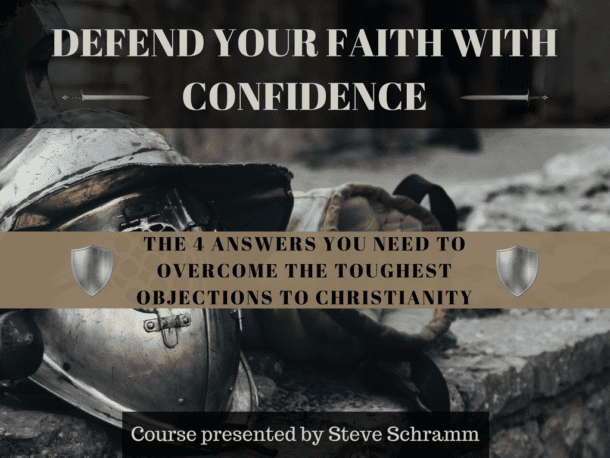It is generally indisputable that there are two primary “ordinances” the church has been given: Baptism and the Lord’s Supper.
Each of these has a particular spiritual significance; they are highly symbolic acts the believer participates in, in order to demonstrate his loyalty to Christ and identification with him.
In reading of the work of Dr. Michael Heiser recently, I came across the line of thinking that baptism is a sort of “holy war.” While I think there could be some nuance to the conversation beyond Heiser’s thinking, I also think his point is generally sound, so let’s discuss it and see what you think.
The Baptism of Nabeel
 Moving on, though, I want to talk about one of my favorite pictures. Pictured is Nabeel Qureshi, a Christian apologist who went to be home with the Lord a few short years ago, and David Wood, another Christian apologist who was a close friend of Nabeel’s and actually led him to Christ.
Moving on, though, I want to talk about one of my favorite pictures. Pictured is Nabeel Qureshi, a Christian apologist who went to be home with the Lord a few short years ago, and David Wood, another Christian apologist who was a close friend of Nabeel’s and actually led him to Christ.
This isn’t just any picture. This picture tells a story. This picture captures a moment in which Nabeel declared to the world—both the physical and spiritual world—just whose side he was on.
This picture has a backdrop—a mosaic of ideas that include a young man’s lifetime of training and indoctrination in the religion of Islam, a family dedicated to Allah, and a propensity to think little of Jesus beyond the conception he was taught growing up.
But this moment. There’s something about it. This moment tells a story. In this moment, Nabeel declared war on the powers of darkness.
Declaring War
We have discussed the concept of “Name Theology” before, here. The idea is that, over and against the gods of the other nations, Israel would bear the Name of Yahweh.
This idea, as we mentioned in that post, carries into the New Testament with Jesus identifying himself as the Name, and with believers bearing the Name as well.
Baptism is one way in which we bear the Name.
To the exclusion of all others, we bear the Name of Yahweh. Our allegiance is with him. Baptism is a public demonstration of that allegiance. It puts the spiritual world on notice.
It says, “I’m going to become a force for Yahweh, and no other god.”
Reflecting on 1 Peter 3:14-22 in The Unseen Realm, Dr. Heiser writes:
Baptism…“saves” in that it reflects a heart decision: a pledge of loyalty to the risen Savior. In effect, baptism in New Testament theology is a loyalty oath, a public avowal of who is on the Lord’s side in the cosmic war between good and evil. But in addition to that, it is also a visceral reminder to the defeated fallen angels. Every baptism is a reiteration of their doom in the wake of the gospel and the kingdom of God. Early Christians understood the typology of this passage and its link back to the fallen angels of Genesis 6. Early baptismal formulas included a renunciation of Satan and his angels for this very reason. Baptism was—and still is—spiritual warfare.1
If you’re confused at this point, you need to go back and read this post. It will introduce you to the Divine Council Worldview, which is essentially the thesis that the spiritual world is more hierarchical than most realize—an idea that is key to understanding certain portion of Scripture.
Ideas throughout Jude and 1 Peter hearken back to this worldview.
To be baptized then, is much more than to show “an outward demonstration of an inward change,” as is commonly promoted. While this is by no means untrue of baptism, it does not quite capture the full picture.
Ritual Cleansing
A second important theological concept is known as cosmic geography, which, for our purposes here, we are going to dovetail into another idea known as ritual purity.
In the Old Testament, there was no shortage of laws to follow, rituals to perform, sacrifices to conduct, etc. Yahweh structured Hebrew life in a particular way, for a particular purpose—the separation of himself from the other gods.
Ancient Israelites were surrounded by paganism on all sides. In his book The Bible Among the Myths, John Oswalt goes so far as to make a fundamental worldview distinction between ancient Israel and every other ancient culture: “transcendence” thinking vs “continuity” thinking.
On the former, God is transcendent. Separate from all other. The ultimate spiritual reality, who freely brought physical reality into existence. He can act inside of that reality, but is wholly apart from it.
On the latter, there is no fundamental distinction between spiritual reality and physical reality. They are continuous. This is why ancient gods of culture were often thought of and/of modeled after items of the physical world, like forces of nature.
For the Hebrews, Yahweh saw fit to ensconce the importance of ritual purity into daily life and activity. Even as early as the story of Moses and the burning bush, it is clear that Yahweh’s presence indicated holy ground.
While Israel was Yahweh’s territory, and therefore, “holy ground” in the Old Testament, the Holy Spirit now indwells every believer. Do you see the importance of this?
The believer is where God dwells on earth today. The believer is Yahweh’s possession. The believer is holy ground. The believer is sacred space.
Baptism is the outward symbolism of this cleansing. It is based not only upon the visual symbolism of Jesus’ dying and raising from the dead, but upon the spiritual symbolism of being washed clean of imperfection and made acceptable for service for Yahweh.
By the rite of baptism, therefore, we make a public declaration of our allegiance to Yahweh as our Lord, and Jesus as our King. We declare holy war on all adversaries spiritual and physical.
Footnotes
- Heiser, M. S. (2015).










